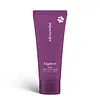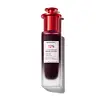What's inside
What's inside
 Key Ingredients
Key Ingredients

 Benefits
Benefits

 Concerns
Concerns

 Ingredients Side-by-side
Ingredients Side-by-side

Water
Skin ConditioningKaolin
AbrasiveDipropylene Glycol
HumectantPropanediol
SolventCetearyl Alcohol
EmollientBentonite
AbsorbentIsononyl Isononanoate
Emollient1,2-Hexanediol
Skin ConditioningArachidyl Alcohol
EmollientGlyceryl Stearate
EmollientMandelic Acid
AntimicrobialCI 77742
Cosmetic ColorantSolanum Melongena Fruit Extract
Skin ConditioningBehenyl Alcohol
EmollientPotassium Cetyl Phosphate
EmulsifyingArachidyl Glucoside
EmulsifyingPotassium Hydroxide
BufferingCI 77891
Cosmetic ColorantCI 77499
Cosmetic ColorantCI 77491
Cosmetic ColorantEthylhexylglycerin
Skin ConditioningCetyl Alcohol
EmollientXanthan Gum
EmulsifyingGlycerin
HumectantDisodium EDTA
Butylene Glycol
HumectantCaprylic/Capric Triglyceride
MaskingHydrogenated Phosphatidylcholine
EmulsifyingCentella Asiatica Extract
CleansingSucrose Stearate
EmollientSodium Hyaluronate
HumectantTocopherol
AntioxidantHyaluronic Acid
HumectantSodium Hyaluronate Crosspolymer
HumectantPotassium Hyaluronate
Skin ConditioningHydroxypropyltrimonium Hyaluronate
Hydrolyzed Hyaluronic Acid
HumectantMadecassoside
AntioxidantMadecassic Acid
Skin ConditioningAsiaticoside
AntioxidantAsiatic Acid
Skin ConditioningSodium Acetylated Hyaluronate
HumectantWater, Kaolin, Dipropylene Glycol, Propanediol, Cetearyl Alcohol, Bentonite, Isononyl Isononanoate, 1,2-Hexanediol, Arachidyl Alcohol, Glyceryl Stearate, Mandelic Acid, CI 77742, Solanum Melongena Fruit Extract, Behenyl Alcohol, Potassium Cetyl Phosphate, Arachidyl Glucoside, Potassium Hydroxide, CI 77891, CI 77499, CI 77491, Ethylhexylglycerin, Cetyl Alcohol, Xanthan Gum, Glycerin, Disodium EDTA, Butylene Glycol, Caprylic/Capric Triglyceride, Hydrogenated Phosphatidylcholine, Centella Asiatica Extract, Sucrose Stearate, Sodium Hyaluronate, Tocopherol, Hyaluronic Acid, Sodium Hyaluronate Crosspolymer, Potassium Hyaluronate, Hydroxypropyltrimonium Hyaluronate, Hydrolyzed Hyaluronic Acid, Madecassoside, Madecassic Acid, Asiaticoside, Asiatic Acid, Sodium Acetylated Hyaluronate
Water
Skin ConditioningGlycolic Acid
BufferingLactic Acid
BufferingSuccinic Acid
BufferingSodium Hydroxide
BufferingSalicylic Acid
MaskingNiacinamide
SmoothingCapryloyl Salicylic Acid
ExfoliatingGluconolactone
Skin ConditioningLactobionic Acid
BufferingGlycerin
HumectantXanthan Gum
Emulsifying1,2-Hexanediol
Skin ConditioningHydroxyacetophenone
AntioxidantButylene Glycol
HumectantPropylene Glycol
HumectantEnantia Chlorantha Bark Extract
Skin ConditioningGardenia Florida Fruit Extract
Skin ConditioningGlycerophosphoinositol Choline
Skin ProtectingBacillus Ferment
Skin ConditioningBrassica Oleracea Acephala Leaf Extract
HumectantPhenoxyethanol
PreservativePotassium Sorbate
PreservativeEthylhexylglycerin
Skin ConditioningOleanolic Acid
Skin ConditioningCyclodextrin
AbsorbentWater, Glycolic Acid, Lactic Acid, Succinic Acid, Sodium Hydroxide, Salicylic Acid, Niacinamide, Capryloyl Salicylic Acid, Gluconolactone, Lactobionic Acid, Glycerin, Xanthan Gum, 1,2-Hexanediol, Hydroxyacetophenone, Butylene Glycol, Propylene Glycol, Enantia Chlorantha Bark Extract, Gardenia Florida Fruit Extract, Glycerophosphoinositol Choline, Bacillus Ferment, Brassica Oleracea Acephala Leaf Extract, Phenoxyethanol, Potassium Sorbate, Ethylhexylglycerin, Oleanolic Acid, Cyclodextrin
 Reviews
Reviews

Ingredients Explained
These ingredients are found in both products.
Ingredients higher up in an ingredient list are typically present in a larger amount.
1,2-Hexanediol is a synthetic liquid and another multi-functional powerhouse.
It is a:
- Humectant, drawing moisture into the skin
- Emollient, helping to soften skin
- Solvent, dispersing and stabilizing formulas
- Preservative booster, enhancing the antimicrobial activity of other preservatives
Butylene Glycol (or BG) is used within cosmetic products for a few different reasons:
Overall, Butylene Glycol is a safe and well-rounded ingredient that works well with other ingredients.
Though this ingredient works well with most skin types, some people with sensitive skin may experience a reaction such as allergic rashes, closed comedones, or itchiness.
Learn more about Butylene GlycolEthylhexylglycerin (we can't pronounce this either) is commonly used as a preservative and skin softener. It is derived from glyceryl.
You might see Ethylhexylglycerin often paired with other preservatives such as phenoxyethanol. Ethylhexylglycerin has been found to increase the effectiveness of these other preservatives.
Glycerin is already naturally found in your skin. It helps moisturize and protect your skin.
A study from 2016 found glycerin to be more effective as a humectant than AHAs and hyaluronic acid.
As a humectant, it helps the skin stay hydrated by pulling moisture to your skin. The low molecular weight of glycerin allows it to pull moisture into the deeper layers of your skin.
Hydrated skin improves your skin barrier; Your skin barrier helps protect against irritants and bacteria.
Glycerin has also been found to have antimicrobial and antiviral properties. Due to these properties, glycerin is often used in wound and burn treatments.
In cosmetics, glycerin is usually derived from plants such as soybean or palm. However, it can also be sourced from animals, such as tallow or animal fat.
This ingredient is organic, colorless, odorless, and non-toxic.
Glycerin is the name for this ingredient in American English. British English uses Glycerol/Glycerine.
Learn more about GlycerinWater. It's the most common cosmetic ingredient of all. You'll usually see it at the top of ingredient lists, meaning that it makes up the largest part of the product.
So why is it so popular? Water most often acts as a solvent - this means that it helps dissolve other ingredients into the formulation.
You'll also recognize water as that liquid we all need to stay alive. If you see this, drink a glass of water. Stay hydrated!
Learn more about WaterXanthan gum is used as a stabilizer and thickener within cosmetic products. It helps give products a sticky, thick feeling - preventing them from being too runny.
On the technical side of things, xanthan gum is a polysaccharide - a combination consisting of multiple sugar molecules bonded together.
Xanthan gum is a pretty common and great ingredient. It is a natural, non-toxic, non-irritating ingredient that is also commonly used in food products.
Learn more about Xanthan Gum